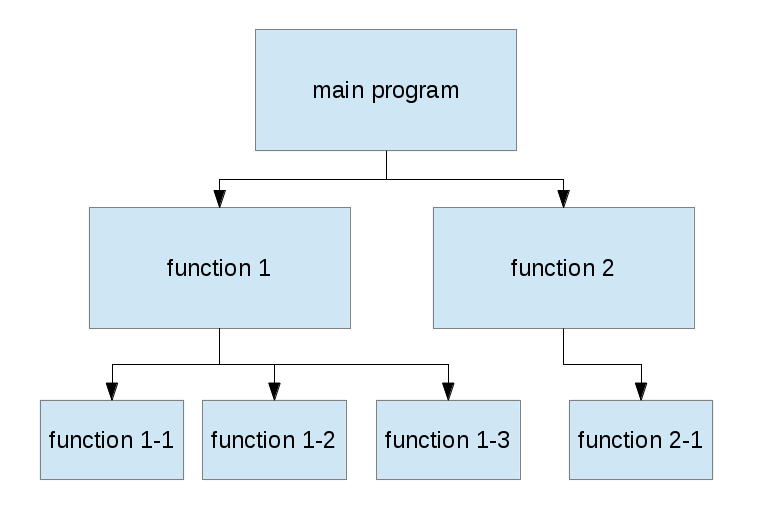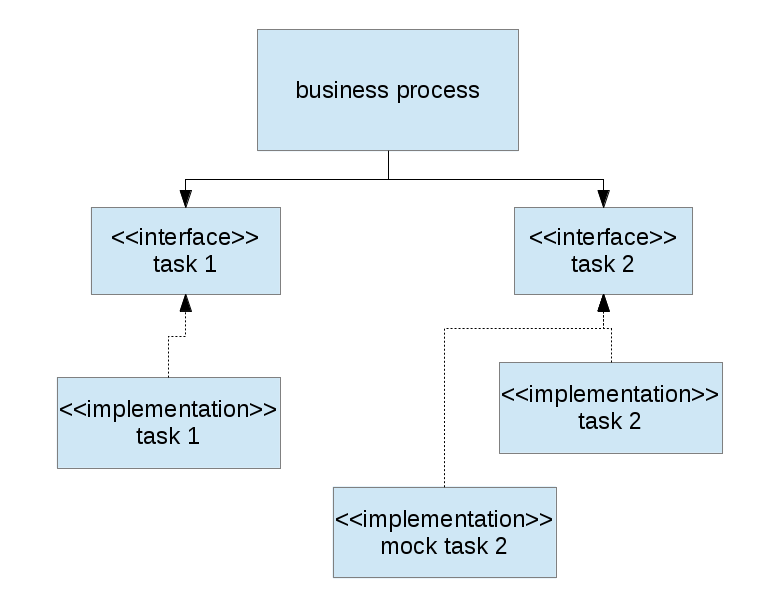Kata 6 is concerned with anagrams. An anagram is a word that consists of characters which, when combined in a different order, form a different word. Now, when I started out with this kata, I was sitting on a train without internet connection, so I just went ahead with what I remembered from a quick glance over the kata description I had done the week before. So I thought that all that needed to be solved was to determine whether two words were anagrams of each other (the complete code, btw. can be found in my github repository for the Clojure codekatas). My initial idea how to solve this is to generate the sets of the characters of both words and compare those:
(defn remove-blanks [word]
(str/replace word " " ""))
(defn anagram-set? [word1 word2]
(let [w1 (remove-blanks word1)
w2 (remove-blanks word2)]
(= (set w1) (set w2))))
This time, I opted for using midje for running the tests, in particular due to the possibility to run tests continually via lein-midje. Midje takes a slightly different approach / syntax to writing tests, adding the notion of facts that are then verified. I.e. tests with midje look like this:
(facts "Testing the set implementation for checking anagrams"
(fact "Set anagram can find anagrams"
(anagram-set? "the law" "wealth") => true)
(fact "Set anagram is too simplistic"
(anagram-set? "the lalalaw" "wealth") => true))
You can already see from the latter fact what is wrong with the initial solution: it’s too simplistic with regard to handling the number of occurences of some character. (Some might say, the introduction of remove-blanks also is too complicated, but I wanted to handle Anne Clark’s “The law is an anagram of wealth”.
Traditional solution
When I finally had some more time to read the kata description more carefully, I recognized that the task actually is to find all anagrams of a given word, checking back against a given wordlist. So that means that the kata consists of two tasks: generate all possible combinations for a given character sequence and check in this wordlist whether some candidate character sequence amounts to a known word. Now, if you take a step back, it’s easy to see that anagrams are nothing else than permutations of the elements of a given (character) sequence, with the additional restriction that all such permutations must be (known) words again. So, we end up with a skeleton which looks like this:
(defn generate-anagrams [word]
"Generate all anagrams of word"
(generate-permutations word))
(defn find-anagrams [word words]
"Finds all anagrams of word in (the sequence of) words"
(let [anagrams (generate-anagrams word)
wordset (set words)]
(loop [candidates anagrams
result []]
(if (empty? candidates)
result
(recur (rest candidates)
(if (and (not (= (first candidates) word))
(contains? wordset (first candidates)))
(concat result (list (first candidates)))
result))))))
Which now, of course leaves us with the task to implement a permutation algorithm. I must admit I had a pretty hard time to come up with something on my own without resorting to looking at other people’s code. Given that the task of code katas is not primarily to invent algorithms on the fly, but to practice coding, I finally read the wikipedia paragraph on computing permutations in lexicographic order, which has a blue print of an algorithm which is attributed to Naranya Pandita, who invented it in the 14th century already. I took a very verbatim and top-down approach this time and ended up with this as the next piece of code:
(defn next-permutation [squence]
(when-let [k (find-largest-index-with-bigger-successor squence)]
(let [l (find-largest-index-bigger-value squence k)
swapped (swap-positions squence k l)
current-perm (reverse-tail swapped (inc k))]
current-perm)))
(defn generate-permutations [squence]
(let [start-perm (sort squence)]
(loop [permutation (next-permutation start-perm)
result (list start-perm)]
(if (or (not permutation)
(empty? permutation))
result
(recur (next-permutation permutation)
(concat result (list permutation)))))))
I went back to writing tests:
(fact "finding the largest index with bigger successor"
(find-largest-index-with-bigger-successor [1 2]) => 0
(find-largest-index-with-bigger-successor [1 2 3 4]) => 2
(find-largest-index-with-bigger-successor [1 2 4 3]) => 1
(find-largest-index-with-bigger-successor [1 3 4 2]) => 1
(find-largest-index-with-bigger-successor [1 4 3 2]) => 0)
The test results are taken straight out of the wikipedia article. Implementing this is pretty straight-forward: we just iterate through the list, keeping track of the current position and check whether the following element is bigger than the current element. If so, we keep the current position, otherwise we keep what we had so far as the result. When we reach the end of the sequence (or there is no subsequent to compare to), we have found the largest position (index) that has a successor with a bigger value. One thing is worth pointing out: the usage of (comp pos? compare) is necessary because > does only work on numbers, but no on characters (or keywords). Why Clojure does not follow Python (which provides a general purpose operators, which use something like compare under the hood which you can override for your data types) in this aspect is beyond me.
(defn find-largest-index-with-bigger-successor [squence]
(loop [restsq (seq squence)
curpos 0
curresult nil]
(cond (or (empty? restsq)
(empty? (rest restsq)))
curresult
((comp pos? compare) (second restsq) (first restsq))
(recur (rest restsq) (inc curpos) curpos)
:else
(recur (rest restsq) (inc curpos) curresult))))
The next step is finding the position of some value that is bigger than the position that we just determined. Again this is straight-forward:
(fact "finding the largest index that has a bigger value than some other position"
(find-largest-index-bigger-value [1 2 3 4] 2) => 3
(find-largest-index-bigger-value [1 2 4 3] 1) => 3
(find-largest-index-bigger-value [1 3 4 2] 1) => 2
(find-largest-index-bigger-value [1 4 3 2] 0) => 3)
(defn find-largest-index-bigger-value [squence index]
(let [compval (nth (vec squence) index)]
(loop [restsq (seq squence)
curpos 0
curresult nil]
(cond (empty? restsq)
curresult
((comp pos? compare) (first restsq) compval)
(recur (rest restsq) (inc curpos) curpos)
:else
(recur (rest restsq) (inc curpos) curresult)))))
We now have to swap these two elements which is easy enough to do with vectors:
(fact "swapping two positions in a sequence"
(swap-positions [1 2 3 4] 2 3) => [1 2 4 3]
(swap-positions [1 2 4 3] 1 3) => [1 3 4 2]
(swap-positions [1 3 4 2] 1 2) => [1 4 3 2]
(swap-positions [1 4 3 2] 0 3) => [2 4 3 1])
(defn swap-positions [squence k l]
(let [seqvec (vec squence)]
(assoc (assoc seqvec k (nth seqvec l))
l (nth seqvec k))))
I first fiddled around with take and drop to avoid converting the input sequence to a vector but this makes the code much more complex. Why there is no general-purpose position-based replace is, again, beyond me — there are a number of discussions around (the lack of) a general-purpose subsequence function which point out issues with complexity (code-and performance-wise), but I doubt that most manually-crafted workarounds lead to any better solutions. Maybe I’m missing something obvious here.
Next, we need to reverse the rest of the sequence behind the position which we just swapped. The example in the wikipedia article is not entirely clear for longer remainders, but some tests revealed that the right position is really the one we just used, like this:
(fact "reverse the tail of a sequence"
(reverse-tail [1 2 4 3] 2) => [1 2 3 4]
(reverse-tail [1 3 4 2] 1) => [1 2 4 3]
(reverse-tail [1 4 3 2] 0) => [2 3 4 1])
(defn reverse-tail [squence tail-position]
(let [prefix (take tail-position squence)
tail (drop tail-position squence)
revtail (reverse tail)]
(concat prefix revtail)))
So, with this we now have all pieces in our hands and can test the entire algorithm:
(fact "finding the next permutation"
(next-permutation [1 2 3 4]) => [1 2 4 3]
(next-permutation [1 2 4 3]) => [1 3 2 4])
Which will, surprise, surprise, give the expected results. So, with this we are able to generate all 24 permutations of [1 2 3 4] and we can go back to our anagram task.
Turns out that the tests would fail: I hadn’t thought about the fact that the destructuring of the character sequence (i.e. the word) would require subsequent combination of the permutation results. That’s easy enough to correct by applying str to all permutation results.
(defn generate-anagrams [word]
(map (partial apply str) (generate-permutations word)))
Now, when you run this code with the test data given in the original kata:
(facts "Testing the anagram implementation"
(fact "Generating all anagrams"
(generate-anagrams "ftw") => '("ftw" "fwt" "tfw" "twf" "wft" "wtf"))
(let [words (split-lines (slurp "wordlist.txt"))]
(find-anagrams "kinship" words) => '("pinkish")
(find-anagrams "enlist" words) => '("inlets" "listen" "silent")
(find-anagrams "boaster" words) => '("boaters" "borates")
(find-anagrams "sinks" words) => '("skins")
(find-anagrams "knits" words) => '("stink")
(find-anagrams "rots" words) => '("sort")
(find-anagrams "thelaw" words) => '("wealth")))
I ran into a StackOverflowException for “boaster” though. Looking at the code, it’s immediately obvious that there the only possible cause for this can be in generate-permutations which generates the result eagerly. So, let’s change that to a lazy variant.
(defn- gen-perms [squenze]
(lazy-seq
(when-let [permutation (next-permutation squenze)]
(cons permutation (gen-perms permutation)))))
(defn generate-permutations [squence]
(let [start-perm (sort squence)]
(cons start-perm (gen-perms start-perm))))
I use an external helper here because we need to add the start permutation to the final result up-front and that doesn’t lend itself to a self-recursive function.
Anyway, this concludes the first solution using a rather traditional algorithm.
Declarative solution
For the next solution, I intended to use something else. Last year, I had the chance to hear David Nolen talk about core.logic which reminded me a lot of the old days in which I was using Prolog for computational linguistics and logic programming. In particular I was thinking of a permutation implementation in Prolog described in Richard O’Keefe’s Craft of Prolog, which I briefly discuss below:
permutation(Xs, Ys) :-
permutation(Xs, Ys, Ys).
permutation([],[],[]).
permutation([X|Xs], Ys1, [_|Bound]) :-
permutation(Xs, Ys, Bound),
insert(Ys, X, Ys1).
insert(L, X, [X|L]).
insert([H|T], X, [H|L]) :-
insert(T,X,L).
If you would want to generate all permutations for a list [1,2,3], you would call permutation([1,2,3],Q) and your Prolog interpreter of choice (e.g. SWI-Prolog) would generate the first possible result for Q and via backtracking generate all other possible permutations.
?- permutation([1,2,3],Q).
Q = [1, 2, 3] ;
Q = [2, 1, 3] ;
Q = [2, 3, 1] ;
Q = [1, 3, 2] ;
Q = [3, 1, 2] ;
Q = [3, 2, 1].
Let’s briefly discuss the Prolog solution, this will make it easier to discuss some issues when translating this to core.logic later on. Prolog uses facts and rules to prove some query. E.g., permutation([],[],[]). is a fact asserting that the permutation of an empty list is the empty list. Anything involving :- is a rule. Prolog uses unification — hang on, you’ll see in a second what this is. Second, you see all those [X|Xs] constructions. These are basically list (de-)construction operations: they split off the first element or add an element (head) and some rest (tail) to form a new list. The point here is that if you’re calling permutation([1,2,3],Q,Q) Prolog will try to unify [1,2,3] with [X|Xs] which is possible when X=1 and Xs=[2,3]; i.e. Prolog automatically tries argument unification. The _ construct means “ignore”, “don’t care”. If we consider only the insert fact (i.e. the first statement), this fact can be used by Prolog via unification to answer queries about any value of the predicate:
?- insert([2,3],1,Q).
Q = [1, 2, 3]
?- insert([2,3],Q,[1,2,3]).
Q = 1
?- insert(Q,1,[1,2,3]).
Q = [2, 3]
The key to understand how permutation works is considering how insert works: the insert rule will deconstruct the first argument (assuming it’s a list) and insert the second argument to it. This way, X will be inserted in all possible positions of the list:
?- insert([2,3],1,Q).
Q = [1, 2, 3] ;
Q = [2, 1, 3] ;
Q = [2, 3, 1].
Now, if you take a closer look at the permutation/3 rule, you’ll recognize that it first of all contains a recursive call to itself. This will basically decompose the first argument (if given) until it reaches the permutation fact governing the base case, i.e. the empty list. It will then insert the elements according to the behavior discussed above. You can think of all comma , as and including a notion of order, i.e. the insert clause will only be used after having processed the recursive call to permutation on each level, respectively. This basically implies a depth-first search — i.e. for generating the multiple values for Q, Prolog will try to find different possible combinations by retrying parts of the computation. This will in particular trigger the computation of the different results of insert/3.
Now let’s come back to Clojure’s core.logic which provides an implementation of many useful things for logic programming based on miniKanren. However, as an add-on to a functional programming language, we will have to use some special operators to translate the Prolog code. The first thing needed is the declaration of the query variables (e.g. Q) within the call to run*, without it you would never see any results (besides run* causing the inference machinery to, well, run). The next operator is == which is used for unification, which is used just as = would be in Prolog inside some rule. Sometimes you need temporary logic variables which you can introduce with fresh. There is also an explicit operator conde (similar to cond) which can be thought of as providing disjunction (or). You need this to be able to mimick Prolog’s multiple facts/rules with the same predicate, e.g. having a simple fact and a rule for permutation/3. There are also further predicates, e.g. conso which can be used to splice/construct lists. This is all nicely explained in the core.logic Primer. I actually started out trying to convert the Prolog code with not much else, like this:
(defn insert-broken [x l nl]
(conde
[(conso x l nl)]
[(fresh [h t]
(conso h t l)
(insert-broken x t l)
(conso h l nl))]))
You’ll note that I exchanged the position of single argument and list in order to match it with the usual argument positions of conso (or conj). Otherwise this looks like a pretty straight translation of the Prolog rules above: it’s either we can directly (via conso) (de)construct the list or we recurse. This version is broken in multiple ways, though. First of all, when you test this version, the recursive call to insert is not constrained enough wrt. the value of l, which will trigger an infinite recursion. You need to put the recursive call behind the second call to conso (cf. the discussion of my inquiry on StackOverflow). However, there is another issue lurking which you can see when comparing the results:
(defn insert-still-broken [x l nl]
(conde
[(conso x l nl)]
[(fresh [h t]
(conso h t l)
(conso h l nl)
(insert-still-broken x t l))]))
FAIL "Checking insert - Simple insert" at (logic_test.clj:11)
Expected: ((1 2) (2 1))
Actual: ((1 2))
FAIL "Checking insert - Simple insert" at (logic_test.clj:12)
Expected: ((1 2 3) (2 1 3) (2 3 1))
Actual: ((1 2 3))
As you can see, this version generates only a single result, inserting the element just in the first position, not in the other positions of l. The reason for this is that we are constraining the solution too much: by using l in the recursive call, we’re constraining the “result” (the value of the third argument) to the initial value of l . This is not what we are doing in the Prolog version, there l is just a temporary value generated in the recursive call. I.e. I fooled myself by basically running into a variable capture problem. So, the correct version of insert looks like this, introducing another fresh variable l1.
(defn insert [x l nl]
(conde
[(conso x l nl)]
[(fresh [h t l1]
(conso h t l)
(conso h l1 nl)
(insert x t l1))]))
However, the discussion on StackOverflow also pointed me to the matching predicates which are also shown, but not explained at all in the examples section of the core.logic wiki. In particular, core.logic offers a defne macro which basically provides a pattern matching facility which is remarkably close to what Prolog provides wrt. argument matching. Consider the following version of the same predicate using defne:
(defne inserto [L X NL]
([L X (X . L)])
([(H . T) X (H . L1)]
(inserto T X L1)))
defne will basically expand into a set of conde expressions, but will also generate fresh variables and matching/unify expressions as appropriate. If you compare this version with the Prolog version, it’s easy to see the parallels: in the second rule, the given arguments to the parameter list L X NL will be tried to unify with [(H . T) X (H . L1)] (note that inserto uses the same parameter order as the Prolog version), thereby decomposing any sequence given as L into head H and tail T — this is basically the same as (conso H T L).
Having covered all those nitty-gritty details of insert, understanding permuto/3 should be straight-forward:
(defne permuto3 [I O L*]
([nil nil nil])
([() () ()])
([(X . Xs) Ys1 (_ . Bound)]
(fresh [Ys]
(permuto3 Xs Ys Bound)
(inserto Ys X Ys1))))
We have two (empty) base cases and a recursive clause again. We’re decomposing the input I into (X . Xs) and unify O (typically the query variable) to Ys1. Using a fresh new variable we recurse with the sublist Xs down to produce permutations of the sublist, eventually inserting X into them. For reference, this is what the non-matching version looks like which makes the argument unification and the value decomposition much more obvious:
(defn permutation
([xs ys] (permutation xs ys ys))
([xl yl res]
(conde
[(== xl '()) (== yl '()) (== res '())]
[(== xl nil) (== yl nil) (== res nil)]
[(fresh [_ x xs ys bound]
(conso x xs xl)
(permutation xs ys bound)
(conso _ bound res)
(insert x ys yl))])))
We can finally wrap this permutation into the same surrounding code we used for the traditional solution to this anagram kata to compute nearly the same results (the order will differ).
Wrapping up, this kata was actually quite hard to solve and took quite a while. I spend too much time trying to find the traditional solution myself before focussing on translating it to Clojure. And then it took me also way more time than I had imagined getting into core.logic, which could use quite a bit more documentation besides the primer on the basics. Anyway, core.logic looks like a very nice addition to the Clojure universe.



 He then goes on to introduce the idea of programming against abstractions and introduces the idea of the
He then goes on to introduce the idea of programming against abstractions and introduces the idea of the  When I take a look at some of my recent Clojure code or at some older code I’ve written in Common Lisp, I immediately recognize dependencies that correspond to those in a classical procedural system. Let’s go for an example and take a look at one specific function in
When I take a look at some of my recent Clojure code or at some older code I’ve written in Common Lisp, I immediately recognize dependencies that correspond to those in a classical procedural system. Let’s go for an example and take a look at one specific function in